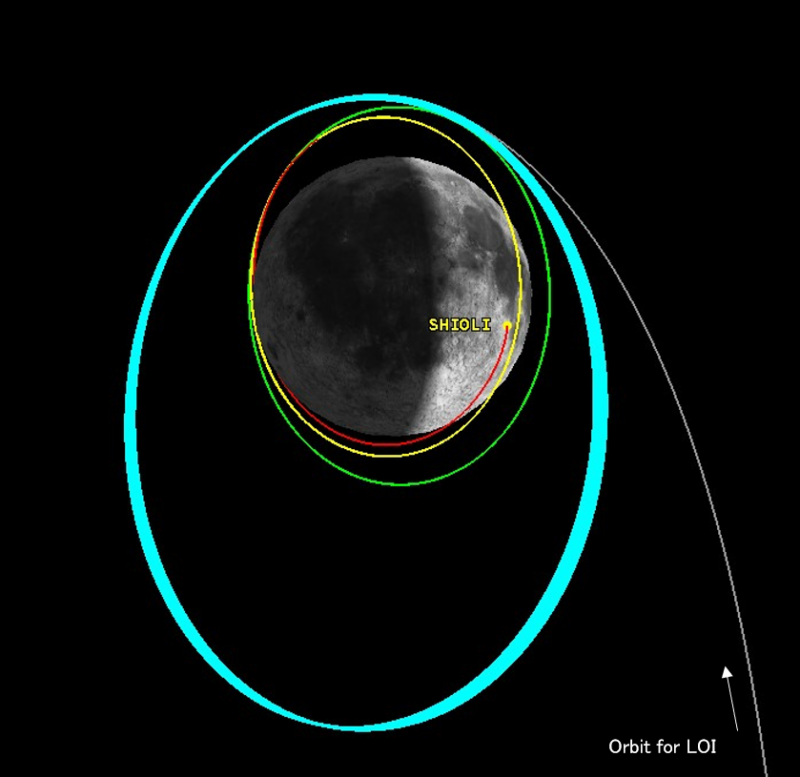Watch the Japanese moon lander – SLIM – touch down live in the player above. Video via JAXA.
SLIM makes soft landing on the moon
The JAXA SLIM lander achieved its main objective, landing softly on the lunar surface. Mission control is still assessing data to determine if it met the second goal, a pinpoint landing within 100 meters of its target. However, not all went according to plan.
JAXA issued a quick statement:
The Japan Aerospace Exploration Agency (JAXA) has confirmed that the Small Lunar Lander Demonstration Vehicle (SLIM) landed on the lunar surface at 0:20 a.m. on January 20, 2024 (Japan Standard Time). Communication has been established after landing.
However, the solar cells are not generating electricity, so we are currently prioritizing data acquisition from the lunar surface.
In the future, we will proceed with detailed analysis of the obtained data. We will keep you updated on the future situation.
that’s all
They also provided a composite video of SLIM’s view of the lunar surface as it descended.
This is an animation made by connecting the images taken by the navigation camera during the Far Moon Descent Maneuver (ADM)!
??????????ADM???????????????????????????????????????#SLIM #JAXA #?????? pic.twitter.com/hojPWUVBpH
— ????????SLIM (@SLIM_JAXA) January 15, 2024
Japanese moon lander SLIM is ready for touchdown
A Japanese Aerospace Exploration Agency (JAXA) lunar lander reached the surface of the moon during a live broadcast on Friday, January 19, 2024. The Smart Lander for Investigating the Moon (SLIM) descended until circling only 9.3 miles (15 km) above the moon. Then at around 12 a.m. JST Saturday, January 20 (15 UTC or 9 a.m. CST on January 19), SLIM began its landing. Touchdown came 20 minutes later.
The lander entered orbit about a month ago, JAXA said on December 25, 2023:
The lunar orbit of SLIM will be inserted into an elliptical lunar orbit connecting the moon’s north and south poles with a period of approximately 6.4 hours, and altitude of about 370 miles (600 km) at the closest point to the moon (perilune), and 2,500 miles (4,000 km) at the furthest point from the moon (apolune). The orbit change proceeded as planned, and the spacecraft is currently in a normal condition.
EarthSky lunar calendars are back in stock! And we’re guaranteed to sell out, so get one while you can. Your support means the world to us and allows us to keep going. Purchase here.
Ready to descend
All SLIM’s systems continue to function nominally, and on Monday (January 15) JAXA reported the craft was ready to begin a slow downward creep:
It was therefore decided to move to the landing descent preparation phase on January 10, 2024, and the apolune (the furthest point from the moon) descent maneuver was successfully executed and completed on January 14, 2024, at 17:32 JST (08:32 UTC). The SLIM spacecraft is further confirmed to be inserted into a circular orbit at the planned altitude of approximately 370 miles (600 km).

Then came the big moment on Friday, the landing.
SLIM’s mission objectives are simple yet difficult
SLIM has basically two tasks to accomplish at the moon, and the first one is just making it to the lunar surface. But not just anywhere on the moon. SLIM’s navigation systems are designed to put the craft within 100 meters of its intended target in Mare Nectaris, the Sea of Nectar. Specifically, it will land near the small impact crater Shioli.
Previous landers were considered on target if they touched down within a few kilometers of their landing zone. JAXA’s SLIM hopes to bull’s-eye the moon using “vision-based navigation” and “navigation, guidance and control.” JAXA will use a three-step process:
1. Initiate the landing descent from lunar orbit and perform precise vision-based navigation to accurately estimate its own position. Utilizing navigation, guidance and control, it will approach the target location above the lunar surface.
2. From above the target location, precise measurements of altitude and terrain-relative velocity will be conducted using the landing radar, which will be integrated into the navigation and guidance system.
3. During the final approach, autonomous image-based obstacle detection and avoidance will be employed to ensure a safe landing, avoiding hazardous rocks and other obstacles.
The second objective is more of a proof-of-concept for SLIM’s small, lightweight design. It’s a compact vehicle, only about 6.5 feet (2 meters) tall and 5 feet (1.5 meters) wide, and weighing just 250 pounds (120 kg). The design is intended to allow more frequent landings on the moon and other planets. So far, the high-performance chemical propulsion system has worked perfectly, nudging SLIM along its way on this shakedown cruise.

JAXA lander will tip itself over to land
SLIM has a unique approach to landing. It will essentially tip itself onto its side in what JAXA calls a two-step landing. The craft will hover toward the lunar surface, tipping itself to about a 45-degree angle before its main leg touches down. The craft will then pitch forward onto a its “front” leg, located at what was moments earlier the top of the craft.
The unusual touchdown will allow SLIM to land on a 15-degree slope. This will be an important ability for self-guided landers on future missions to the moon and other solar system destinations featuring uneven and sloping surfaces. In theory, JAXA says the method works well:
Especially for the case of a SLIM-scale spacecraft, the ‘two-step landing method,’ in which the main landing gear first touches the ground and then rotates forward to stabilize, has shown excellent reliable landing results through simulation.
Hopefully, SLIM will perform better than the last two attempts to land on the moon. Two private efforts – HAKUTO-R and Peregrine Mission One – both failed.
Bottom line: The JAXA Special Lander for Investigating the Moon (SLIM) landed successfully on the lunar surface today, January 19, 2024.
Via JAXA
Read more: HAKUTO-R – 1st private moon lander – loses contact
Read more: Failed lunar lander hit Earth’s atmosphere on Thursday




